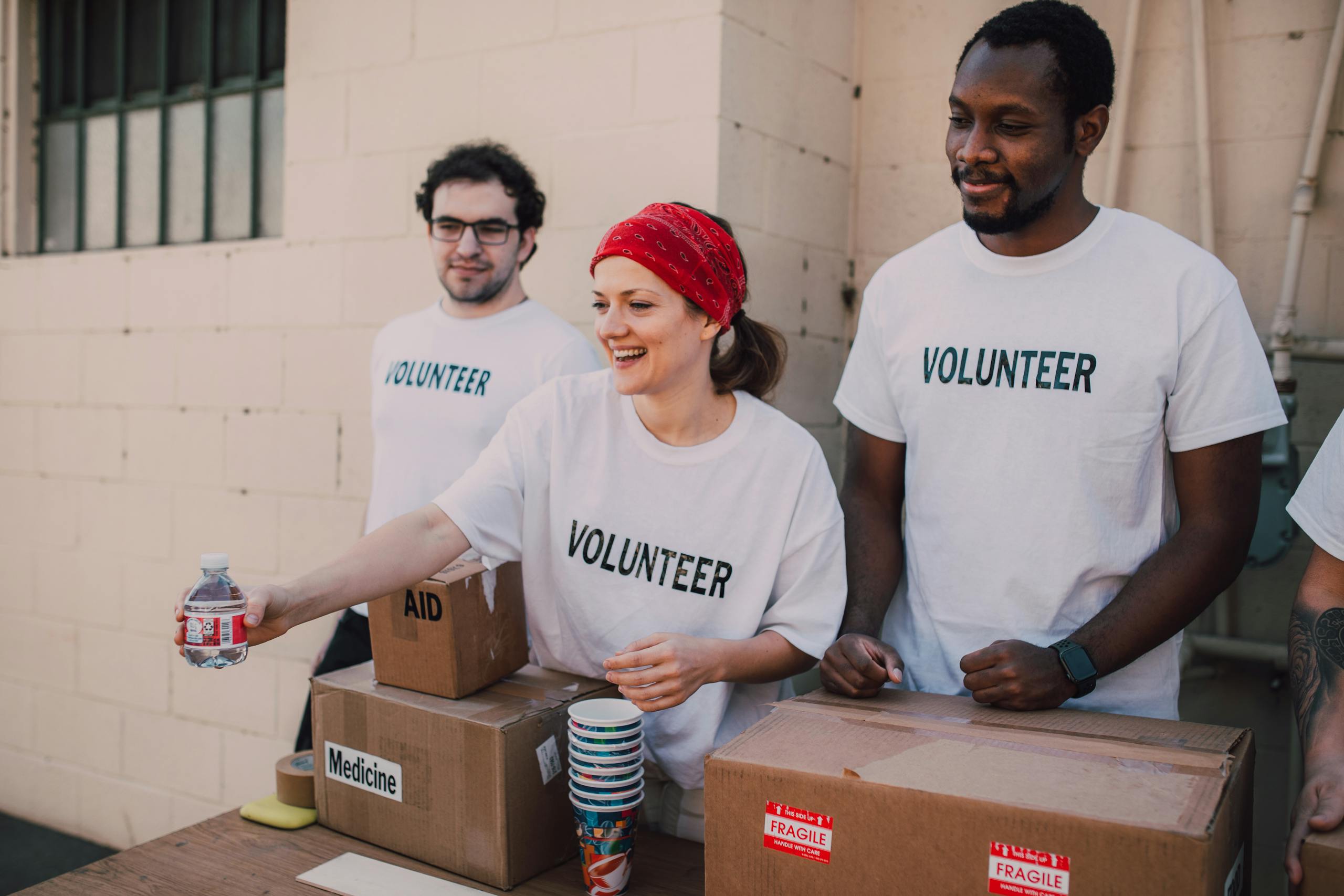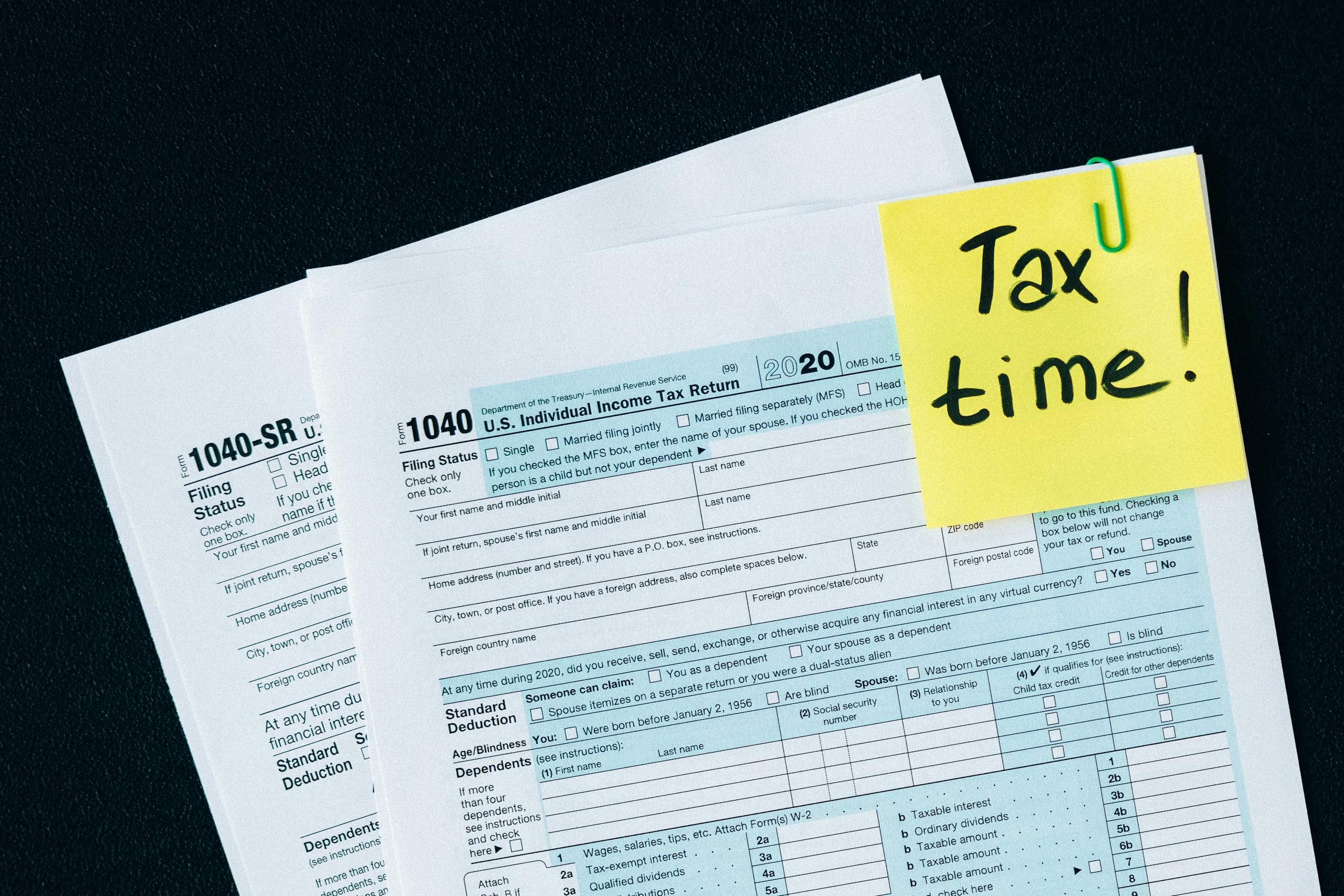Choosing the best swag for your nonprofit can significantly boost your organization’s visibility and engagement. High-quality, practical items like custom t-shirts, branded pens, and reusable water bottles are excellent choices to showcase your cause. These items not only promote your nonprofit but also serve as daily reminders of your mission to those who use them.
Table of contents
Headwear like hats and beanies can also be powerful giveaways, offering style while spreading your message. Jackets and sweatshirts are great for fundraiser events, providing warmth and a sense of community. Whether you’re planning for a large event or seeking year-round promotion, thoughtfully selected swag helps build a lasting connection with your supporters.
Swag bags can be particularly effective for various events, filled with items that cater to different budgets. They act as goodie bags with staying power, encouraging continuous engagement with your nonprofit’s mission.
Understanding Swag in Nonprofit Context
Swag serves as a crucial tool for nonprofits, contributing to their mission by building brand awareness and appreciating donors. This section explains what swag is, its role, how it helps in spreading your organization’s name, and showing gratitude to supporters.
Definition and Role of Swag in Nonprofits
Swag refers tobranded items that nonprofits give away. These items can be anything from t-shirts and wristbands to tote bags and stickers. Swag plays a key role in spreading the word about your mission. It allows people to become walking advertisements for your cause.
The key is to choose swag items that arepractical and visually appealing. This ensures that people will use them often, increasing the visibility of your nonprofit’s brand. Swag also helps create a sense of community among your supporters.
Swag as a Tool for Building Brand Awareness
Swag is highly effective for building brand awareness. Items like t-shirts, hats, and tote bags can serve as mobile billboards. Every time someone wears or uses your swag, they’re spreading your message.
Effective swag should be eye-catching and include your nonprofit’s logo and message. Choose items thatalign with your brand’s values and mission. This helps ensure your swag will stand out and be remembered by others.
Swag and Donor Appreciation
Another important role of swag is to show appreciation to your donors. Small gifts like buttons, keychains, orpersonalized items can make donors feel valued. This kind of acknowledgment can help strengthen your relationship with them.
Providing swag during fundraising events or when thanking donors for their contributions adds a personal touch. Custom items tailored to your donors’ preferences can make your gratitude feel more genuine and heartfelt. Ultimately, appreciated donors are more likely to remain loyal and continue supporting your nonprofit’s mission.
Strategizing Swag for Impact
To maximize the effectiveness of your nonprofit’s swag, it’s crucial to align it with your mission, understand your target audience, and select an engaging theme. These strategies ensure that your swag not only promotes but also resonates with your cause.
Aligning Swag with Nonprofit Mission and Values
Swag should reflect the core values and mission of your nonprofit. Choose items that embody what your organization stands for. For instance, if environmental conservation is your focus, opt for eco-friendly products like reusable water bottles or biodegradable bags.
Ensure that the items carry your logo and messaging clearly to create a lasting impression. Personalized notes can also reinforce the mission. This approach keeps your cause at the forefront and deepens the connection with your audience.
Target Audience Analysis
Identify who will be receiving the swag. This might be volunteers, donors, or event participants. Understanding their demographics and preferences can guide your choices. Younger audiences may prefer tech gadgets or trendy apparel, while older donors might appreciate practical items like notebooks or pens.
Conduct surveys or gather feedback to pinpoint what your audience values. Tailoring the swag to their interests not only increases engagement but also enhances the perceived value of the items.
Theme Selection and Designing for Engagement
Selecting a cohesive theme helps create a memorable experience. Themes can align with specific events, seasons, or campaigns. For a fundraising event, a “community unity” theme could feature matching t-shirts and hats, fostering a sense of togetherness.
The design should be eye-catching and relevant to your cause. Use bold colors and clear fonts, and ensure that the messaging is concise and impactful. Encourage recipients to share their swag on social media by including event-specific hashtags, enhancing visibility and engagement.
By strategically planning your swag, you can amplify your nonprofit’s impact, build a deeper connection with your audience, and promote your mission effectively.
Marketing with Swag
Using swag can significantly boost your nonprofit’s visibility by tapping into social media, creating personal connections, and enhancing fundraising and awareness campaigns.
Leveraging Social Media
Swag items can play a crucial role in your social media strategy. When followers receive branded items, they are likely to share photos and updates on their profiles, increasing your organization’s visibility. Encourage posts by creating unique hashtags and runninggiveaways. Distribute items likeT-shirts, water bottles, and stickers that feature your logo.
To maximize reach, collaborate with influencers or other organizations. Their broader audience can help spread your message further. This approach can lead to higher engagement and attract new donors to your cause.
Creating Connection Through Swag
Swag helps in forming a tangible connection between your nonprofit and its supporters. Thoughtfully chosen items show appreciation and keep your mission top of mind. For example, personalized thank-you gifts, likenotebooks oreco-friendly tote bags, can make a supporter feel valued.
At events, offer attendees items that foster a sense of community. Branded lanyards or buttons can serve as a conversation starter and create a shared identity. This helps build a loyal supporter base that feels emotionally connected to your cause.
Swag for Fundraising and Awareness Campaigns
Use swag to amplify fundraising efforts and raise awareness. Branded items can be sold as merchandise, with proceeds going towards your mission. Campaign-specific gear, such as T-shirts for a walkathon, can both fundraise and promote the event.
Swag serves as free advertising when people wear or use your branded items in public. Consider items that people commonly use, like mugs orface masks, to keep your message visible. Incorporating swag into your fundraising strategy can boost donations and increase your nonprofit’s reach.
Choosing the Right Swag Items
Selecting the best swag for your nonprofit starts with understanding your audience and choosing items that will be well-received and functional. Practical items and wearable swag can significantly boost your organization’s visibility and engagement.
Popular and Effective Nonprofit Swag Items
Some popular and effective items include t-shirts, tote bags, and socks. These items are highly visible and used regularly, making them excellent for spreading your message. T-shirts can be worn at events or during everyday activities, acting as mobile billboards for your cause. Tote bags are practical for shopping, work, and more, carrying your logo and message wherever they go. Socks are another unique option; they add a fun element while being useful and comfortable.
Custom Apparel and Accessories
Custom apparel like t-shirts andhoodies is a staple in nonprofit swag. They are versatile and can be worn in various settings, ensuring your brand gets noticed. When designing these items, ensure they are comfortable and stylish so that people will want to wear them. Adding thoughtful accessories like hats, wristbands, or pins can enhance your branding.Custom hats are particularly popular in sunny climates, while wristbands and pins can be worn with different outfits without being intrusive.
Useful Items for Everyday Use
Items that people use daily are effective for keeping your nonprofit in mind. Think about branded water bottles, notebooks, and pens. These items are not only practical but also serve as constant reminders of your cause. Water bottles help promote health and environmental awareness. Notebooks and pens come in handy for meetings, school, or work, making them a practical choice. Ensuring these items are of good quality will make a lasting impression and encourage continued use.
By focusing on popular items, custom apparel, and everyday useful items, you can choose the right swag to effectively promote your nonprofit.
Managing Swag Logistics
Efficient swag logistics ensures that your nonprofit gets the best return on investment, meets your budget, and effectively distributes items. This involves careful planning and execution.
Budgeting and Investment
Managing your swag budget involves setting clear limits and priorities. Determine how much you’re willing to spend and allocate funds accordingly. Identifyhigh-impact items like t-shirts or water bottles that deliver good value.
Investing wisely in quality products can actually save money in the long run.Buying in bulk can reduce costs per item, making it more affordable. Use a table to plan out costs:
| Item | Quantity | Cost per Item | Total Cost |
| T-shirts | 500 | $5 | $2,500 |
| Water Bottles | 300 | $3 | $900 |
Ordering and Fulfillment
When ordering, choose a reliable supplier known for quality and timely delivery. Look for companies with positive reviews and good customer service. Consider using platforms like Printful that integrate with online stores.
Fulfillment should be streamlined. Use software to track inventory and orders. Keep a close eye on stock levels to avoid shortages or excess. Clear communication with suppliers ensures timely fulfillment.
Distribution Strategies
Distributing swag effectively boosts your nonprofit’s visibility. Consider different methods like:
- Events: Hand out swag at charity runs, fairs, or galas.
- Mailing: Send items to key donors or as an incentive for donations.
- Partnerships: Collaborate with businesses to distribute swag at their locations.
Ensure each item is branded clearly with your logo and contact information. This turns every piece of swag into a promotional tool, extending your reach and influence.
Maximizing the Impact of Swag
Using swag effectively can increase engagement, measure success, and tell powerful stories. Here’s how you can make your nonprofit’s swag work harder for your mission.
Engagement and Follow-Up
Swag should not only raise awareness but also encourage future interactions. Items like custom t-shirts or tote bags can keep your nonprofit visible, prompting conversations long after an event.
Tips for Engagement:
- Interactive Items: Include QR codes or links on your swag to drive people to your website or social media.
- Exclusive Offers: Offer special discounts or invites for events through swag items, encouraging more participation.
Use swag to collect feedback. Surveys or hashtags printed on items can prompt attendees to share their experiences and stay engaged with your cause.
Measuring the Effectiveness of Swag
To understand if your swag is making an impact, track its effectiveness. You can measure this through multiple methods.
Key Metrics:
- Engagement Rates: Track social media mentions, shares, and event attendance.
- Donation Increases: Compare donation amounts before and after distributing swag.
- Surveys: Send simple surveys to participants to gauge their interest and satisfaction.
Using these metrics, you can tweak your swag strategy for better outcomes, ensuring that resources are well spent and impactful.
Stories and Testimonials
Swag becomes more than just an item when it carries a story. Use testimonials and personal stories to highlight its impact.
Ways to Collect Stories:
- Events: Ask attendees to share their experience with your swag and how it supports your mission.
- Social Media: Encourage followers to post about their swag experiences with a specific hashtag.
Highlight Successes:
- Case Studies: Create brief case studies of how swag helped increase awareness or funds.
- Quotes: Use powerful quotes from supporters and beneficiaries to show the real-life impact of your nonprofit’s swag.
By collecting and sharing these stories, you give a human face to your mission, inspiring more people to join and support your cause.
Swag Etiquette and Best Practices
When handling swag for your nonprofit, it’s crucial to be mindful of cultural sensitivities, environmental impacts, and the importance of showing gratitude and recognition.
Cultural Considerations and Inclusivity
Being sensitive to cultural differences is key. Avoid symbols or designs that could be offensive or misunderstood. Use inclusive language and imagery that resonate with a diverse audience. For example, clothing sizes should accommodate various body types, and food items should consider dietary restrictions and preferences. Inclusive swag helps everyone feel valued and respected.
Environmentally Conscious Choices
Choose sustainable materials to minimize your environmental footprint. Opt for items made from recycled or biodegradable materials, and limit single-use plastics. Consider the entire lifecycle of the product—from production to disposal. Environmentally friendly swag not only supports your nonprofit’s image but also encourages responsible consumption.
Gratitude and Recognition
Swag should effectively express your gratitude. Personalize items where possible to make recipients feel special. Simple touches like handwritten notes or custom messages can enhance the emotional value of the gifts. Recognize volunteers, donors, and board members with thoughtful swag that reflects their contributions and your appreciation.
By following these best practices, you ensure that your nonprofit’s swag respects cultural nuances, promotes environmental sustainability, and properly acknowledges those who support your mission.
Case Studies and Inspiration
Nonprofit organizations often use swag to build awareness, foster community, and show appreciation to donors. This section delves into successful campaigns and the lessons learned from them.
Successful Swag Campaigns
Consider the “Clean Water Initiative” campaign: They usedeco-friendly tote bags and reusable water bottles. These items not only promoted their message but also underscored their mission of environmental sustainability. This campaign saw a 30% increase in volunteer participation.
Another great example is “Books for All”: This literacy nonprofit distributed branded bookmarks and notebooks during their events. The tangible items kept their cause on the minds of recipients and led to a 20% boost in donations.
The “Feed the Hungry” project: Utilized promotional t-shirts and hats during charity events. Participants wore the swag, creating a unified visual representation of the cause. This campaign resulted in heightened community awareness and increased social media engagement.
Lessons Learned from Nonprofit Swag Implementation
Importance of alignment with the mission: Swag should reflect the core values of your organization. For example, an environmental nonprofit might use products made from recycled materials, resonating with their audience.
Personalization matters: Tailored items can increase their value. Adding the recipient’s name or a personal note can make a big difference in how the swag is perceived.
Quality over quantity: Investing in high-quality items that people will use regularly can keep your nonprofit’s message in circulation longer. Poor quality items might be discarded quickly, reducing the campaign’s impact.
Timely delivery: Ensuring that swag reaches its audience at crucial moments, such as during events or special campaigns, can amplify its effectiveness.
By incorporating these insights, you can make your nonprofit’s swag campaigns more successful and impactful.
Frequently Asked Questions
Learn about the best promotional items, how to get free or inexpensive swag, creative merchandise ideas, top online stores, requesting donations, and successful fundraising events for nonprofits.
What are effective promotional items for nonprofit organizations to distribute?
Effective promotional items include branded caps, stickers, jackets, and sweatshirts. These items help raise awareness and build a sense of community. High-visibility items like hats and beanies are popular and in-demand.
How can nonprofits acquire free or inexpensive swag for events?
Nonprofits can contact local businesses and ask for donations of promotional items. Some companies may also offer discounts to nonprofits. Additionally, buying in bulk often reduces prices and can help stay within budget.
What are some creative non-profit merchandise ideas that engage supporters?
Creative merchandise ideas include mystery bags,custom apparel, and personalized thank-you gifts for volunteers and donors. Unique and useful items like water bottles, notebooks, and tote bags can also engage supporters effectively.
Which online merchandise stores are best suited for nonprofit organizations?
Top online stores for nonprofit merchandise include Swag.com, SwagDrop, and Crestline. These stores offer a variety of customizable items designed for fundraising and awareness-building purposes.
How can a nonprofit request swag bag donations from businesses?
Nonprofits can write a formal request letter or email to local businesses, explaining the purpose of their event and how the donation will be used. It’s helpful to mention the benefits of the donation, such as community exposure and brand recognition.
What fundraising events have proven most successful for nonprofits?
Popular and successful fundraising events include charity runs or walks, silent auctions, and galas. Online fundraising campaigns and social media challenges are also effective, especially when promoted widely.



